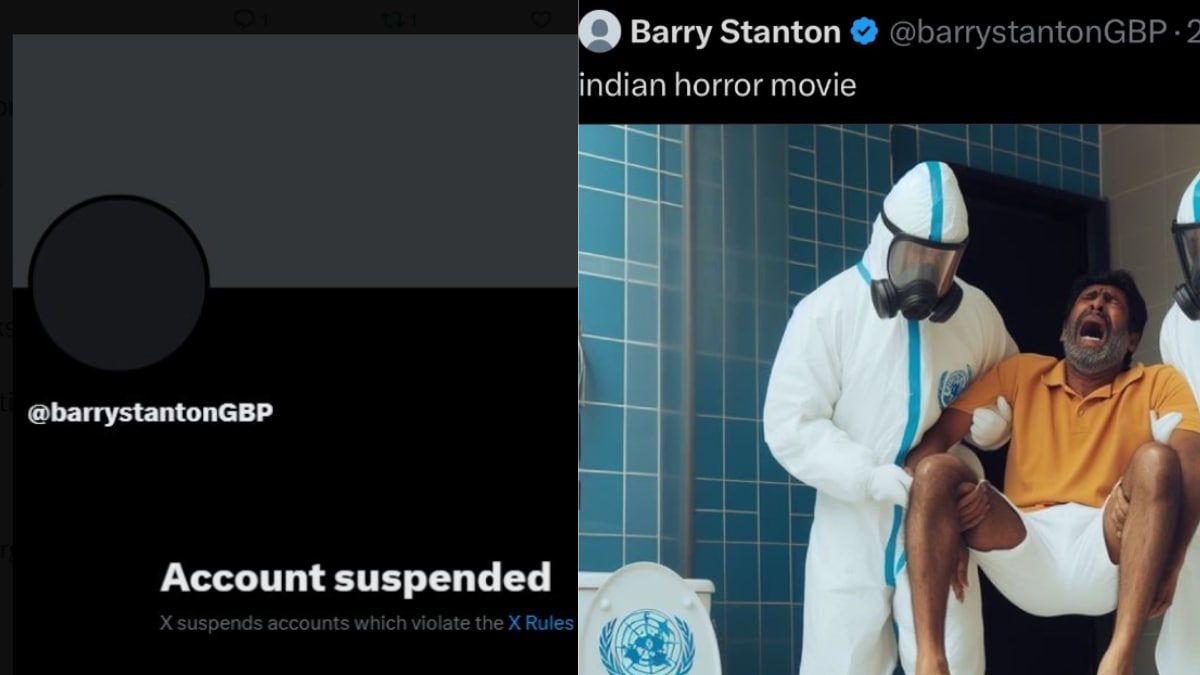The suspension of Barry Stanton’s X account, a verified user who frequently posted racist content targeting Indians, highlights the complex issue of hate speech on social media. Stanton, who gained notoriety for sharing derogatory cartoons and racially charged remarks, faced widespread backlash from Indian users leading to his account being taken down. This incident underscores the urgency to address the proliferation of hate speech on social media platforms, particularly in light of the ease with which such content can spread and impact individuals and communities.
The Fallout of Racist Content
The controversy surrounding Barry Stanton’s account demonstrates the significant impact hate speech can have. Stanton’s racist remarks, shared with his large following on X, fueled outrage and resulted in a widespread call for his account’s suspension. This incident demonstrates the potential for hate speech to cause harm and damage reputations, particularly when amplified by influential platforms.
The Power of Collective Action
Stanton’s account was suspended after hundreds of Indian users reported his content to X. The collective action taken by these users highlights the effectiveness of organized protest against online hate speech. When individuals come together to highlight harmful content, it puts pressure on platforms to take action. The #suspended hashtag, which trended on X following the account’s suspension, exemplifies the power of coordinated efforts in combatting online hate.
Addressing the Root of the Problem
While the suspension of Stanton’s account is a positive step, it’s crucial to address the underlying factors that enable hate speech to flourish online. The fact that Stanton’s account was likely a fabrication, utilizing another person’s identity to promote racism, emphasizes the need for greater transparency and accountability from platforms. This case raises concerns about the ease with which users can create and amplify hate speech with anonymity.
The Role of Social Media Platforms
Stanton’s case underscores the critical role played by social media platforms in mitigating the spread of hate speech. Platforms like X bear a significant responsibility to combat this issue. The existing algorithms that determine content visibility on X, critics argue, contribute to the problem by inadvertently promoting harmful content. This highlights the need for more effective mechanisms to detect and remove hate speech while ensuring the platform’s commitment to fair and equitable content moderation practices.
The Impact of Algorithms
Critics argue that the existing algorithms on platforms like X are not effectively designed to filter out hate speech. The algorithm’s focus on maximizing engagement can inadvertently amplify harmful content, leading to wider reach and impact. The responsibility of regulating content and fostering an inclusive online environment falls heavily on the shoulders of these platforms.
Beyond Suspension
The suspension of Barry Stanton’s account is a significant step towards addressing the issue of online hate speech, however, more needs to be done to address the root causes and ensure these harmful acts are not repeated. Platforms like X should focus on developing proactive measures, not only to remove harmful content but also to prevent its dissemination in the first place. This requires a more comprehensive approach, including investing in effective detection tools, improving reporting mechanisms, and promoting community education and awareness about online hate speech.
The Implications for the Future
The Barry Stanton case serves as a stark reminder of the urgent need to combat online hate speech. Social media platforms, government agencies, and users all have a role to play in fostering a safe and inclusive digital environment. Increased vigilance, proactive intervention, and collaboration are crucial for addressing this global issue.
Take Away Points
- Online hate speech, particularly targeting individuals and groups based on race and nationality, can have significant and detrimental consequences.
- Platforms like X have a responsibility to implement effective measures to mitigate the spread of hate speech.
- Users play a crucial role in combating online hate by reporting harmful content and raising awareness.
- A collective effort involving social media companies, governments, and individual users is crucial to addressing this complex issue.
